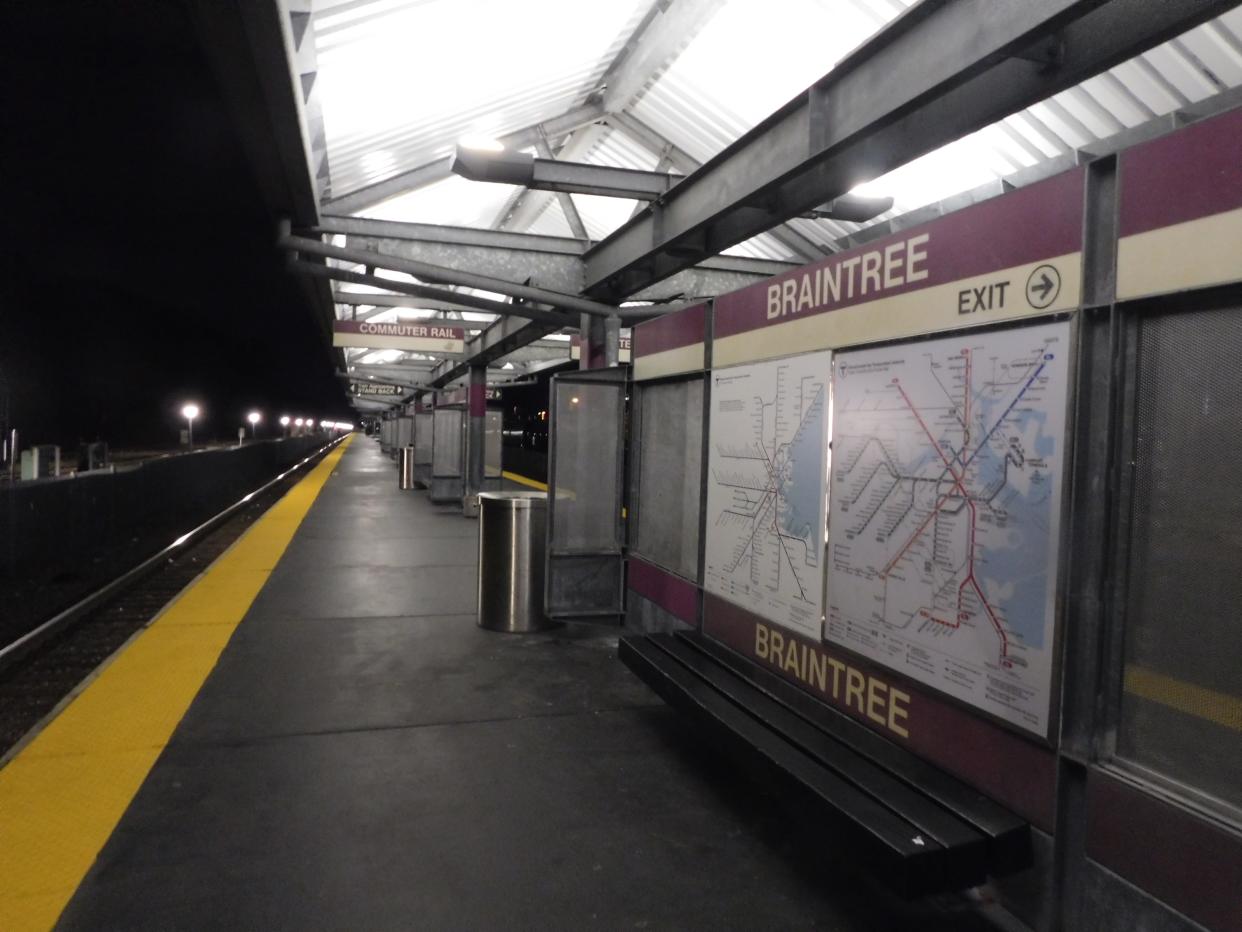Zoning for nearly 4,000 more apartments OK'd in Braintree

BRAINTREE − Less than two weeks before the state’s end-of-year deadline, Braintree has passed a series of zoning changes to promote multifamily housing in four areas of the town.
After two hours of discussion and the ultimate 6-2 vote Tuesday evening, the town will now send its plans to the state to determine whether they are in compliance with the MBTA Communities Act, a 2021 state law signed by then-Gov. Charlie Baker to provide more opportunities for housing within a half mile of public transportation. Outgoing Town Councilors Stephen O’Brien and Lawrence Mackin Jr. voted against the measure.
The requirement means Braintree must allow zoning that could create at least 3,769 apartments or condominiums, which is one-quarter of the town’s existing housing units. There must be a minimum density of 15 units an acre.
The law only requires zoning changes, not the construction of those units.
More: Braintree must comply with the MBTA Communities Act for housing. How will it adhere to it?
The four districts cover more than 200 acres along the Red Line and Greenbush commuter rail line. The largest district, referred to as Red Line South, is 127 acres and sits just south of the Braintree T station down to Plain Street, and encompasses the former Armstrong Cork site.
Red Line North is almost 49 acres and consists mostly of the Marketplace at Braintree site and the former Motel 6, for which the planning board recently signed off on a Chick-fil-A restaurant and a Brookline Bank branch.
The Greenbush Braintree Weymouth Landing District encompasses 18 acres on either side of the Greenbush station.
The fourth district is Red Line Village, a 9-acre triangle east of Hancock Street and south of Pearl Street, excluding the Walgreens.
“We need to make sure that we’re not part of preserving a status quo that disproportionately harms people who are young families starting out, people of color, middle-income couples looking for proximity to the city while living in a suburban town,” said District 3 Town Councilor Elizabeth Maglio. “Regardless of the state mandating this law, this is an important step for the town of Braintree.”
Why some Braintree residents oppose MBTA Communities Act
Most of the half dozen public comments made were against the proposal, with residents expressing concern about “government overreach,” future traffic woes, strained resources and the financial state of the MBTA.
In November, an audit showed that the transit authority would need more than $24 billion to repair T stations, trains, tracks and more.
“We’re supposed to restructure our town for this?” said Liz Page, vice president of the North Braintree Civic Association.
Mackin said he first ran for town council in opposition of Chapter 40B, a state law that helps developers avoid local restrictions by building affordable housing units, and what he felt was “the state forcing their housing agenda.”
“It’s bullying. It’s extortion,” he said of communities facing withheld state dollars over noncompliance with the MBTA Communities Law. “Being threatened like that shouldn’t be a normal practice.”
O’Brien also had concerns about the proposal following comments from the acting vice chair of the town’s planning board. Kim Kroha had asked for an amendment to the proposal to close a potential loophole where property owners could divide their lots to increase the project density.
But after discussion and advice from the town solicitor, councilors ultimately did not agree to change it over concerns that its inclusion could cause the state to reject their proposal entirely.
“I just don’t feel comfortable voting on something where there are questions,” O’Brien said, adding that he wished there was more opportunity for public comment. “I don’t think this is ready for prime time.”
'Off-base' allegations from developer over limits
The town council did include a measure previously approved by the planning board that would allow increased height and density in these districts through a special permit process.
But a lawyer representing F.X. Messina Enterprises, the largest landowner within the districts, wrote a Dec. 13 letter to the town council that included accusations of “spot zoning,” saying the Armstrong Cork property has been in the town’s “crosshairs.” Another representative for the development company asked on Tuesday for the town to exempt this property from the 325-unit limit.
Town Solicitor Crystal Huff countered that the zoning in those districts treated each lot the same, and that the letter did not consider the special permit process.
“There are other avenues that property owners can look at to be creative in land use,” she said. “The allegations that have been levied through that letter are off base.”
Other councilors emphasized that this would be a slow process rather than developments popping up like weeds, and that each proposal would still have to go through the town’s processes for approval.
Council President Meredith Boericke said Braintree has “quite literally paid the price” as the “victim of ineffective, outdated zoning laws,” adding that this was an economic opportunity the town couldn’t pass up.
“This isn’t going to be like the sky is going to fall tomorrow, ladies and gentlemen,” said District 2 Councilor Joseph Reynolds. “But doing nothing, I guarantee you, the bottom is going to fall out.”
Hannah Morse covers growth and development for The Patriot Ledger. Contact her at hmorse@patriotledger.com.
This article originally appeared on The Patriot Ledger: Braintree could get nearly 4,000 more apartments, condos

